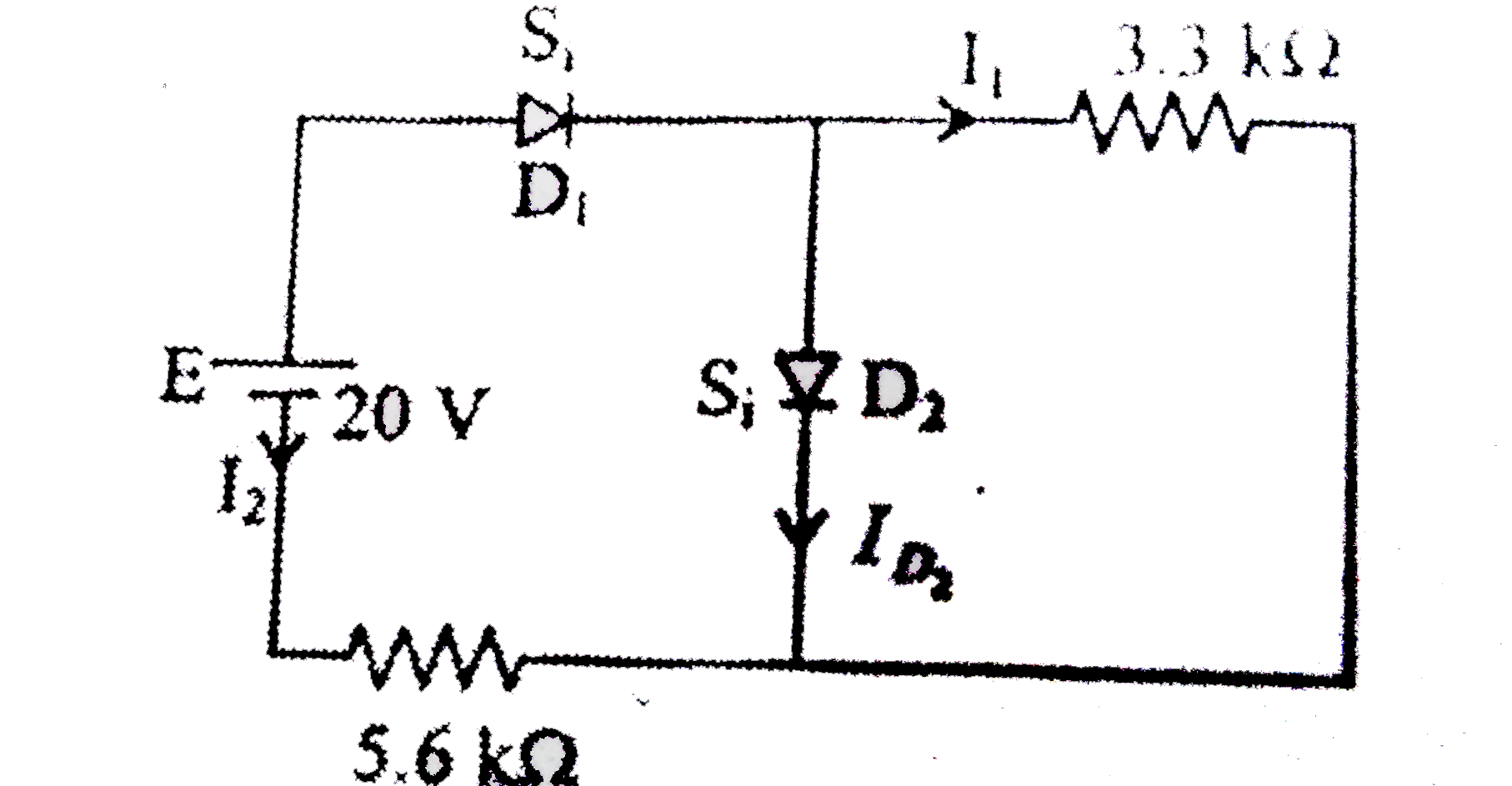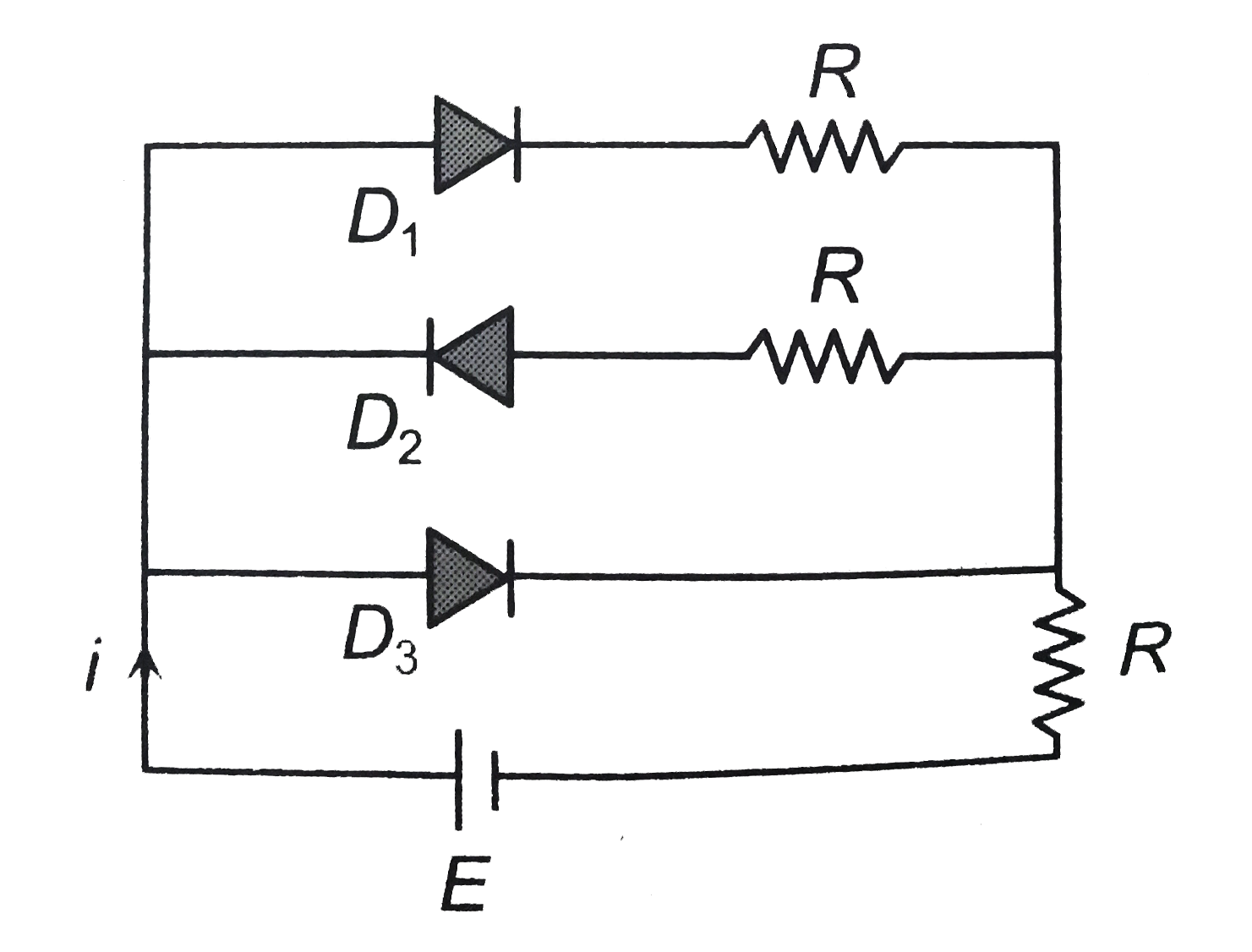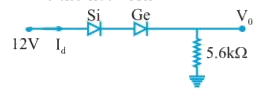Determine V0,Id1 and Id2 for the given network. Where D1 and D2 are made of silicon.

V0=Vsi=0.7V
I1=10−0.70.33×103
=28.18mA
∴Id1=Id2=28.182
=14.09 mA
Topper's Solved these Questions
- ELECTRONIC DEVICES BOOK - CBSE COMPLEMENTARY MATERIALCHAPTER - ELECTRONIC DEVICES EXERCISE - LONG ANSWER QUESTIONS (5 MARKS)
1 Video
- ELECTROMAGNETIC WAVES AND OPTICSBOOK - CBSE COMPLEMENTARY MATERIALCHAPTER - ELECTROMAGNETIC WAVES AND OPTICSEXERCISE - 1 mark question
11 Videos
- ELECTROSTATICS AND CURRENT ELECTRICITY BOOK - CBSE COMPLEMENTARY MATERIALCHAPTER - ELECTROSTATICS AND CURRENT ELECTRICITY EXERCISE - NUMERICALS
49 Videos
Similar Questions
Knowledge Check
In the circuit shown in figure I1,I2 and ID2 are respectively-
 A0.212MA,3.32mA,3.108mAB2.12mA,3.32mA,3.108mAC0.212mA,0.332mA,3.108mADNone of these
A0.212MA,3.32mA,3.108mAB2.12mA,3.32mA,3.108mAC0.212mA,0.332mA,3.108mADNone of theseThe Graham's law states that ''at constant pressure and temperature the rate of diffusion or effusion of a gas is inversely proportional to the squar root of its density Rate of diffusion ∝1√d
If r1 and r2 represent the rates of diffusion of two gases and d1 and d2 are their respective densities, then
r1r2=√d2d1
r1r2=√M2M1×P1P2
V1×t2V2×t1=√d2d1=√M2M1
V∝n (where n is no of moles)
V1∝n1 and V2∝n2
If some moles of O2 diffuse in 18 sec and same moles of other gas diffuse in 45sec then what is the molecular weight of the unknown gas ? .A452182×32B182452×32C182452×32D452182×32The Graham's law states that ''at constant pressure and temperature the rate of diffusion or effusion of a gas is inversely proportional to the squar root of its density Rate of diffusion ∝1√d
If r1 and r2 represent the rates of diffusion of two gases and d1 and d2 are their respective densities, then
r1r2=√d2d1
r1r2=√M2M1×P1P2
V1×t2V2×t1=√d2d1=√M2M1
V∝n (where n is no of moles)
V1∝n1 and V2∝n2
Helium and argon monoatomic gases and their atomic weights are 4 and 40 respectively Under identical conditions helium will diffuse through a semipermeable membrane .A3.16 time as fast as argonB7.32 time as fast as argonC1.58 time as fast as argonD10 time as fast as argon
If D1andD2 are two 3×3 diagonal matrices, then which of the following is/are true? D1andD2 is a diagonal matrix b. D1D2=D2D1 c. D12+D22 is a diagonal matrix d. none of these
View SolutionIn the following circuit of PN junction diodes D1,D2 and D3 are ideal then i is

View SolutionThe ration of roots of the equations ax2+bx+c=0 and px^(2) + qx + r = 0 are equal. If D1andD2 are respective discriminates. Then what is D1D2 equal to ?
View SolutionThe ratio of roots of the equations ax2+bx+c=0andpx2+qx+r=0 are equal If D1andD2 are respectively discriminants, then what is D1D2 equal to ?
View SolutionA solution containing H+ and D+ ions is in equilibrium with a mioxture of H2 and D2 gases at 25∘C. If the partial pressures of both gases are 1.0 atm, find the ratio of [D+]/[H^(+)]:<br>(Given:E_(D^(+)//(D_(2)))^(@)=-0.003V]
View Solution

